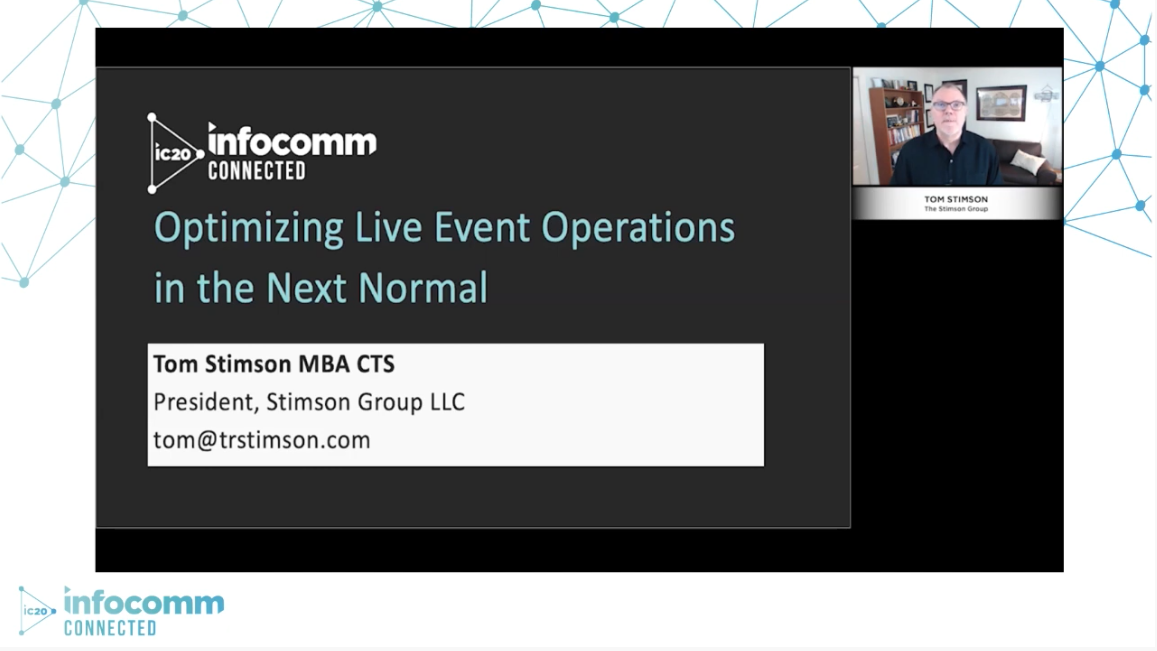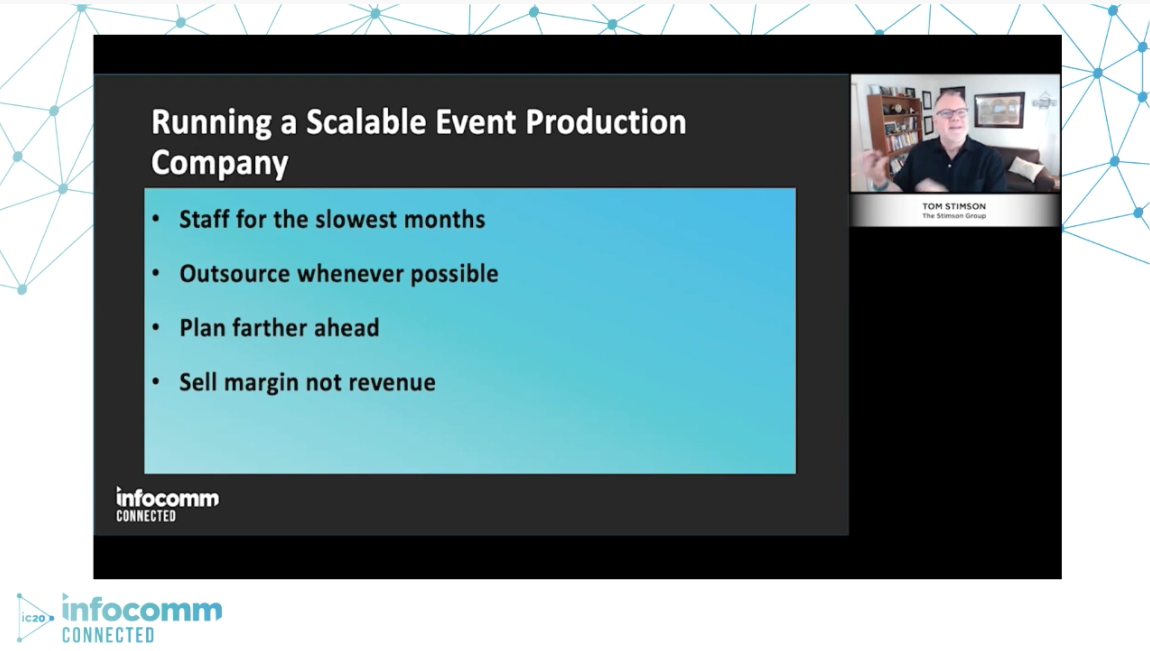Optimizing Live Events in the New Normal
The live events industry has been hard hit by the pandemic as more and more events have been cancelled or postponed. But there is some light at the end of the tunnel as things start to slowly come back in person. We spoke with Tom Stimson of the Stimson Group about how businesses can rethink how they manage their operations to become more sustainable and optimize their profits in this new world.

Live Events Industry Conventional Thinking
Traditionally, live events businesses tend to make order preparation the highest priority on any job by prepping jobs early and sending the entire crew out on shows to save costs. The warehouse jobs now become steppingstones to technician jobs so that everyone on staff can be more billable and more useful.
There is a tendency to avoid using subrentals and subcontractors because it is thought that they increase costs and lower profits. Freelance technicians are only booked as the last resort because staff techs are believed to be better, and it shows the customer that you are putting them first if you send staff.
Why We Do This and Why It Is a Problem
As Tom explained, “This is because operations have always been our process constraint. In our industry we have far too much overhead; our pricing has become transparent and commoditized. We have reactive company cultures to try and keep up with the demands of business. Our margins are shrinking and our profits are shrinking.”
The result is that companies are overstaffed in the slow months resulting in unprofitability for as much as half of the year.
“Customers get to see all of our math plus the free stuff we throw in; which makes it even worse because we've lost all of our negotiating power. And because we're short-handed when we're busy, reactive leadership solves problems by throwing money at things. We buy more gear and we hire more people which further erodes our profits.”
The result is that revenue becomes flat from year to year unless there is a windfall project. That means that the strategy is now to find windfall jobs with huge revenue numbers to try and make up the deficit.
COVID-19 Adds Challenges to an Already Challenged Business Environment
The situation is exhausting and, if that were not enough, fate has dropped a double whammy on us. Not only are events cancelled in the short term, it’s continuing every week. When in-person events do return, there will be significant changes in audience size and safety protocols and all the things needed to run a healthy event.
Today we have some ideas, but no certainty about how the future of events is going to even appear. The Zoom meeting is everywhere. Customers are doing streaming events and webcasts. Live events businesses are feeling unneeded and unvalued.
We Don’t Need to Be as Risky as the Restaurant Industry
Let's take a look at the restaurant industry, because they're having a very similar challenge. We've learned what restaurants have known for years. Their business models are not designed to be profitable when people can't come into the restaurant. If restaurants only use half of their tables or less, there's absolutely no formula for them to survive financially.
The restaurant industry model is always going to be limited. Live events on the other hand have unlimited capacity and that's the miracle of the event economy. The business can run without having any resources at all. They can have an unlimited depth chart of staff and subcontractors that is inherently scalable, except that live events has traditionally built their companies like restaurants.
There is seasonal business so revenue is highly variable and it changes from year to year. That can cause too much overhead. Owning all the gear and hiring all the staff needed for the busy season results in year-round pay and underused product. This makes for a staggering amount of overhead and negative profits. Yet many companies attempt to do some version of this model.
“We can lower the overhead and add some scalability into our system. We can increase our cost of goods sold and lower our overhead. In this model, we lower it by half, so the company starts to turn a profit with the same revenue. In slow months your cost of goods sold might be 20%, but in busy months your cost of goods sold might be 60% or more. But with an average of 50% cost of goods sold, you can have a pretty good year.”
Scalable Companies Balance Finance, Operations, and Sales
“Running a scalable event company means that you're going to staff for the slowest months and outsource whenever possible. You're going to plan further ahead. You're going to sell the profit, not sell the revenue. Operations can no longer be the constraint in your business. Operations is the gateway to unlimited growth and scalability.”
Every department needs to work together in sync. Finance can provide actual costs, which should influence the selling price. Sales can provide demand estimates, which allows operations to plan resources in the most cost-effective way. Operations tells sales how much it can work with and how not to over deliver and tells finance how much cash is needed and when. Operations is the bellwether at capacity. With great forecasting and well-managed cash, the only limitation is operations ability to develop resources.

View your supply chain as a partner instead of just as a cost. That's what's going to allow you to be scalable. Our industry has always dealt with uncertainty. In a high risk business you’ll need to have higher margins in order to survive, but with the right model you can thrive.
Read next: The Real Cost of Your People: Understanding Labor Burden
Do you own or run a business? What is the value of your employees? Not their value as irreplaceable assets, brand ambassadors, or knowledge torchbearers — their monetary value.
Watch the full session: Optimizing Live Events in the New Normal




